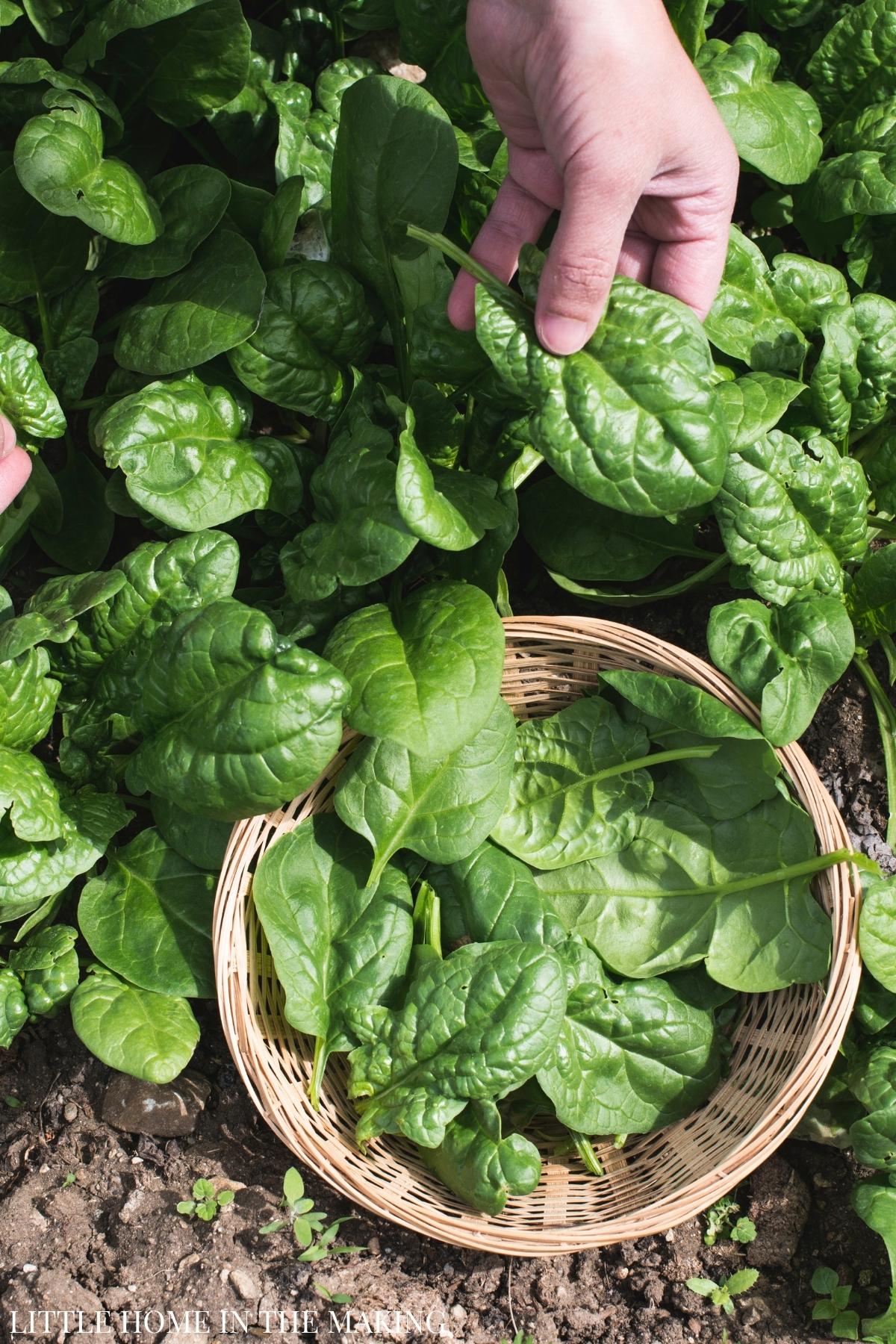If you're looking for an all natural way to maximize your home garden yields, try out companion planting! This list of the best spinach companion plants will get you well on your way, and help minimize disease and pest damage.

What is Companion Planting?
Companion planting is an old fashioned practice of both home gardeners and farmers. The idea is that certain plants do extremely well together (helping to fight off diseases and pests), while others seem to have a negative impact on both disease control and overall grown.
I've been working through a series where I share the best (and worse) companion plants for each home garden cultivar. Check out my archive of companion plants to see which ones we have learned about so far.
Today we are taking a peak at the best spinach companion plants, and we will also chat about how you can effectively use spinach as a pre-crop.
Let's get started!

Best Companion Plants for Spinach
The wonderful thing about spinach is that it has very few enemies, and can work with many plants, so long as those plants are grown during the cooler months. Here are a few of the best companion plants for spinach:
- Radish
- Strawberries
- Peas
- Kale
- Beets
- Swiss chard
- Amaranth
- Nasturtiums - this popular flower is a companion plant powerhouse! It helps deter pests, and all parts of the plant are edible to boot.
- Lambs quarters - Related to spinach, this popular weed is also edible and is a great indicator of soil health.
- Quinoa - Also related to spinach and very close to lamb's quarters, this grain grows high on a tall, skinny plant over a long season, while spinach stays low to the ground and grows for just a short time.
Doesn't Grow Well With Spinach:
- Fennel
- Potatoes
- Squash - including summer squash, winter squash and pumpkins.
- Onions - These require quite a bit of light in order to bulb up properly, and the leafy growth of spinach can easily shade the soil where onions need to grow. For that reason, it's recommended to spinach your spinach (and all leafy greens) further away from your onion patch.
Note about family members:
Of the above list, beets, Swiss chard, amaranth, lamb's quarters and quinoa are all members of the same family as spinach. They will grow together well because they require similar growing conditions, but keep in mind that they may compete for the same things in your soil. Be sure to replenish the bed with fresh compost and use a commercial or organic fertilizer if that's part of your gardening plan.

Using Spinach as a Pre-Crop
Spinach and a variety of other plants have a saponin content, which is beneficial to the soil. The most common source of saponin is from the Soapberry tree, which produces what we often call "Soap nuts" that have been used for many years as a natural laundry solution.
Saponin is a soapy substance, and plants that contain saponin make an excellent pre-crop to foods that require a rich soil. Their decomposition (of remaining leaves, stems, and roots) creates a favorable environment. Spinach has been used as a pre-crop for strawberries for years, and is often grown alongside them to continue to produce a favorable environment.
In addition to spinach, some saponin rich plants include:
- Primrose
- Carnation
- Viola
- Mint
- Camellia
- Orach (very similar to spinach but can be grown in the warm season)
- Pokeweed
- Runner beans
- Tomatoes
- Mullien
- Spinach
- Potatoes
- Horse chestnut
- Chinaberry/Soapberry trees
Since spinach is a cool season crop with a short harvest window, it makes a great pre-crop. It grows well before it's time to put the main crop into the garden, and any remaining leafy greens easily decompose into the garden soil. It's great for prepping the ground for main season plants like beans, squash, sunflowers, tomatoes, eggplants, and root vegetables.

Spinach Planting FAQ's
The plants that do the best with spinach include radish, strawberries, peas, kale, beets, Swiss chard, amaranth, nasturtiums, lamb's quarters, and quinoa.
Yes, you can grow spinach in a pot. Just be sure to select a pot that is at least 12" in width, and 6 or more inches deep. Fill the pot with a blend of compost, coconut coir (or Canadian peat), and vermiculite (or perlite). Be sure the pot has good drainage and water often.
If you have a South facing window or indoor grow lights, you should be able to grow spinach indoors without issue. Although spinach grown outdoors will be more nutrient rich, you can get a great crop indoors as long as you use soil rich in organic matter (like a compost blend).
More Companion Planting Guides
- Collard Greens Companion Plants
- Bok Choy Companion Plants
- Horseradish Companion Plants
- Arugula Companion Plants
- Celery Companion Plants
- Rhubarb Companion Plants
Sources/Resources:
- Carrots Love Tomatoes - Louise Riotte
- Will Bonsall's Essential Guide to Radical, Self-Reliant Gardening
- All New Square Foot Gardening - Mel Bartholomew






















Leave a Reply